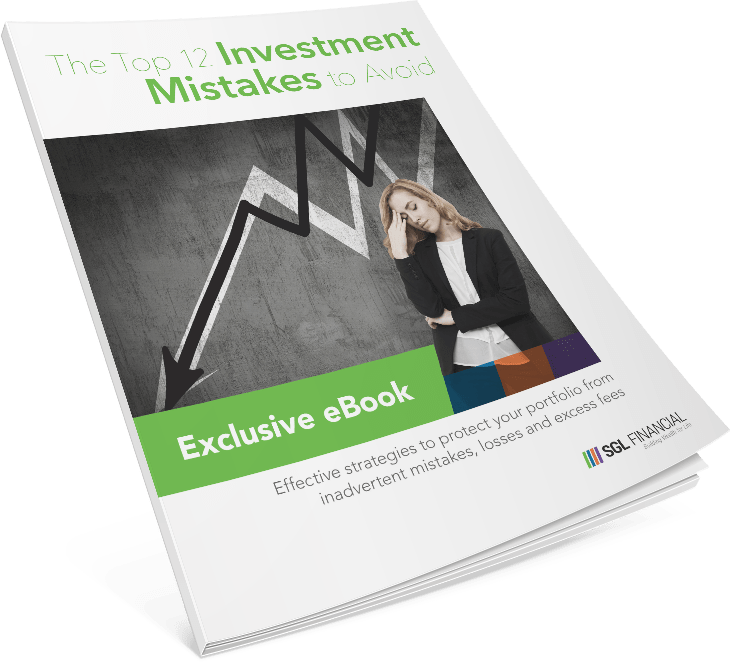Practical Tax Strategies for Small Business Owners
by Gabriel Lewit

As a business owner, your daily to-do list is more than likely a mile long: managing operations, overseeing employees, and keeping clients or customers happy. However, one area that often slips through the cracks is tax planning. At SGL Financial, our Buffalo Grove-based financial planners specialize in creating effective tax strategies for small business owners. Our financial and tax planning backgrounds give us a more complete view of your financial situation, so our advice is tailored, strategic, and practical.
We’ve seen how easily tax strategy can become an afterthought. That said, it shouldn’t be. When accumulating assets, you should view taxes as an expense; every dollar saved is one more dollar for your future use. So, a proactive tax strategy for your business is one of the most effective ways to keep more of your earnings.
It’s important to distinguish between tax preparation and tax planning. Filing your return once a year is about complying with the requirements of various agencies. On the other hand, tax planning is an ongoing process that can help reduce your tax liability, improve cash flow, and create more stability for your business and personal finances.
This article will examine innovative tax strategies you can implement for your small business.
Read our latest guide: Smart Financial Planning for Buffalo Grove Business Owners
Choose the Right Business Structure
The way your business is structured directly impacts how your income is taxed. Choosing the most efficient legal structure can save you thousands of dollars yearly, especially as your business revenue and personal income grow.
Here’s a breakdown of the most common structures:
- Sole Proprietorship: Simple to set up, but all profits are taxed as personal income.
- LLC (Limited Liability Company): Offers legal protection and flexibility in taxing income (can be treated as a sole proprietorship, partnership, or S-Corp).
- S-Corp: Pass-through entity, but with the added benefit of splitting income into salary and distributions. This can reduce self-employment tax liability when managed correctly.
- C-Corp: Subject to corporate tax rates and potential double taxation if profits are distributed as dividends.
For example, many small business owners elect S-Corp status once they reach a certain income threshold. By paying themselves a reasonable salary and taking the rest as distributions, they can lower the amount subject to payroll taxes.
There’s no one-size-fits-all answer. This is where the services of a Buffalo Grove CFP® professional with tax experience can help evaluate which structure best fits your needs for personal income and business growth.
Watch our co-founder, Steve Lewit, on WGN 9 News discuss saving for retirement while also saving for your child’s education.
Maximize Deductions and Write-Offs
One of the most effective ways to reduce taxable income is by claiming every deduction you’re eligible for. Unfortunately, many business owners overlook deductions that could make a real difference in their net incomes.
Common deductions include:
- Home Office: If you use part of your home exclusively for business, you may qualify for a home office deduction.
- Vehicle Expenses: Track mileage or actual vehicle costs related to business use.
- Equipment Depreciation: The costs of computers, office furniture, and other equipment may be deducted over time.
- Health Insurance Premiums: Self-employed individuals may deduct their premiums for themselves and their families.
Tax planning starts with understanding the difference between capital expenses (investments in long-term assets) and operational expenses (day-to-day costs). Both types of spending have different tax treatments, and proper categorization can help you optimize deductions. Bookkeeping software or apps can make expense tracking easier and less stressful when preparing tax returns.
Leverage Retirement Plan Contributions
Small business owners often overlook the tax benefits of retirement plans. But putting money aside for your future can also help lower current tax bills.
Here are four popular retirement options for small business owners:
- SEP IRA: This retirement account type is funded entirely by the employer and has high contribution limits. A SEP IRA is best for solo business owners or those with limited employees.
- Contribution limits:
- Up to 25% of compensation or $70,000 (for 2025), whichever is less
- Note: Employer-only contributions must be made equally to eligible employees
- Solo 401(k): Designed for businesses with no employees (other than a spouse), allowing employer and employee contributions. It is best for self-employed individuals with no employees (except their spouses).
- Contribution limits:
- Employee deferral: Up to $23,500 (or $31,000 if 50+)
- Employer contribution: Up to 25% of compensation
- Total: Up to $70,000, or $77,500 if 50+
Note: Allows Roth contributions and optional loans
- SIMPLE IRA: A good option for businesses with up to 100 employees.
- Contribution limits:
- Employee deferral: Up to $16,500 (or $20,000 if 50+)
- Employer match: Up to 3% of compensation
Note: Lower cost, but requires annual employer contributions
- Traditional/Roth IRA: Best for supplemental savings.
- Contribution limits:
- Up to $7,000 (or $8,000 if 50+)
Note: Subject to income limits; not tied to the business
Each plan offers unique tax advantages. SGL Financial’s financial professionals can help you choose the right option based on your income, business structure, and retirement goals.
Don’t miss our recent podcast, “The Mind Behind the Money.”
Consider the Timing of Income and Expenses
If income from your small business fluctuates from year to year or even month to month, managing when you recognize income or pay expenses can offer meaningful tax savings.
For example, if you anticipate a higher income next year, you might delay billing a client until January. Or if you need to increase deductions this year, you could prepay certain expenses in December.
This strategy, known as income deferral and/or expense acceleration, can help smooth out taxable income amounts over time.
Plan for Quarterly Estimated Taxes
If you are not a W-2 employee, as a business owner, you may have to pay taxes throughout the year in the form of quarterly estimated payments. Missing or underpaying these taxes can lead to penalties, even if your annual income generates the same amount of tax.
Based on your projected income, the IRS generally expects you to pay as you go. If your business is new or growing quickly, estimating how much you owe can be difficult.
This is where a Buffalo Grove fiduciary financial professional with tax planning experience can help you calculate these payments, factoring in all deductions, credits, and business income projections. That way, you’re not hit with a big surprise and a large penalty in April.
Listen to our podcast, “Behavior, Budgets, and the World’s Oldest Human.”
Use of Tax Credits
While deductions reduce your taxable income, tax credits reduce your actual tax bill, dollar for dollar. That’s why reviewing your eligibility for available business credits every year is worthwhile.
Examples of eligible tax credits can include:
- Research & Development (R&D) Credit: Non-tech businesses that develop new products, systems, or processes may qualify for this credit.
- Work Opportunity Tax Credit (WOTC): Offers credits for hiring individuals from certain target groups.
- Small Business Health Care Tax Credit: For businesses that provide health insurance to employees and meet specific requirements.
Tax credits can be more valuable than deductions, but many business owners miss them because the eligibility rules can be overwhelming. A financial advisor with tax experience can help identify what credits may apply to your situation.
Get to Know SGL Financial
At SGL Financial, we offer more than basic financial advice. Our team includes financial planners and in-house CPAs, so we examine your full financial picture, both business and personal, to help you make more informed, confident decisions.
If you’re a small business owner looking to take a more strategic approach to taxes, schedule a financial review with one of our Buffalo Grove financial professionals. We’ll help you evaluate where you are today and uncover new opportunities to improve your long-term financial outlook.

